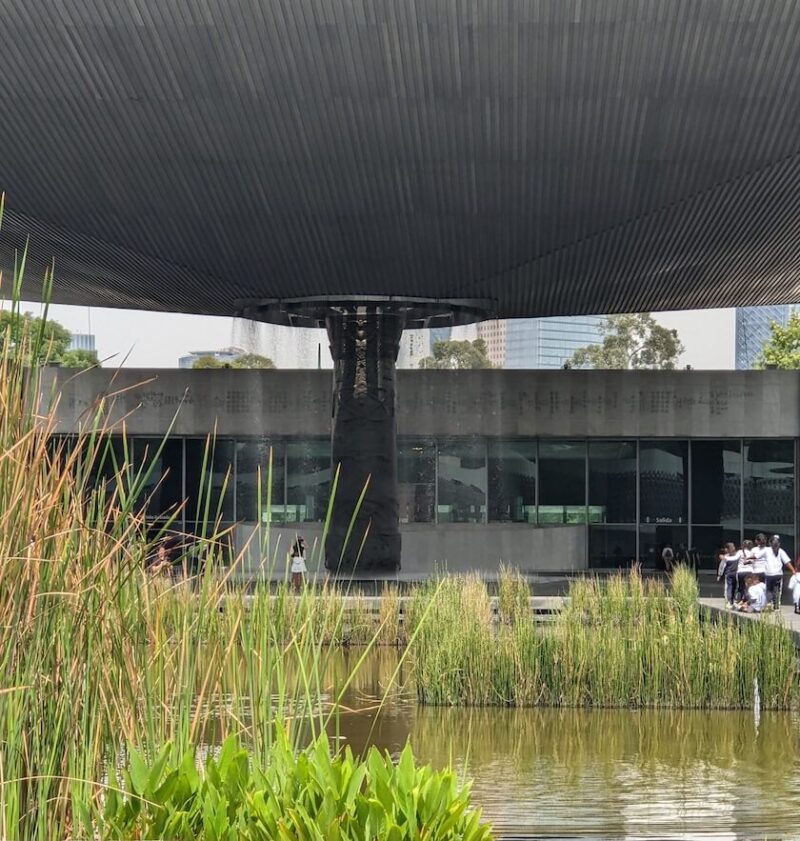Of Mexico City’s 150-plus museums, the most visited is the Museo Nacional de Antropología (National Museum of Anthropology, or MNA). No other museum in the country is larger or more popular. While the museum’s collections are incredible, the building itself is also worth a visit for its own sake.
The History of the National Museum of Anthropology in Mexico City


Amazingly, the history of the collections at the National Museum of Anthropology date all the way back to the late 18th century. At that time, the Royal and Pontifical University of Mexico housed key items such as the Sun Stone.
What followed was a succession of museums housing these items and others through the 18th, 19th, and 20th centuries. This began with the Cabinet of Curiosities in 1790, and then the foundation of the National Mexican Museum in 1825 by order of President Guadalupe Victoria.
Eventually, the National Mexican Museum’s collections were split, with natural history items relocated to another building. The name of the National Mexican Museum changed to the National Museum of Archaeology, History and Ethnography. This new name reflected the nature of its remaining collections. It re-opened with this name in 1910.

As the collections continued to expand, it became necessary to split up this museum as well. The resulting museums are the Museo Nacional de Historia (National History Museum) at Chapultepec Castle, and the museum that today is called the National Museum of Anthropology.
The Architecture of the National Museum of Anthropology
Three architects collaborated on the design for the National Museum of Anthropology in 1964: Pedro Ramírez Vázquez, Jorge Campuzano, and Rafael Mijares Alcérreca, all from Mexico.

The museum is massive, spanning 857,890 square feet. Its layout is simple, but elegant. 23 exhibit rooms together with gardens enclose a central courtyard. In the courtyard is a pond. The huge concrete awning is called “El Paraguas” (“umbrella”).
Pre-Columbian Inspiration
The design features of the courtyard pay homage to Pre-Columbian architecture (incidentally, Mayan elements have also informed some other MCM architects’ work). The architects based the dimensions of the courtyard on measurements from the ancient Mayan city of Uxmal. Additional features in the courtyard represent the elements.
With only a solitary pillar propping it up, the concrete slab seems to defy gravity to float overhead. An isolated shoe foundation provides the necessary load distribution. Sculptor José Chávez Morado designed beautiful bronze artwork that wraps around the pillar.

Artist Manuel Felgueréz drew inspiration from traditional Puuc architecture to cast the stylized idea of a snake in anodized aluminum latticework in the courtyard.


The National Museum of Anthropology has been called one of Mexico’s national treasures. If you find yourself in Mexico City, you should pay it a visit. In fact, there is a gorgeous MCM luxury apartment where you can stay during your trip.
Both the collections within the National Museum of Anthropology and the thoughtful and majestic modernist architecture will compel you to reflect with awe at the marvels of Mexico’s Pre-Columbian civilizations.
If you enjoyed this post, you may want to explore some other MCM museums. Check out Retro Road Trip: São Paulo Museum Of Art and Adjaye Associates’ Exemplary Design Of The National Museum Of African American History And Culture. And of course don’t forget to follow us on Instagram, Facebook and Pinterest for more Atomic Ranch articles and ideas!












